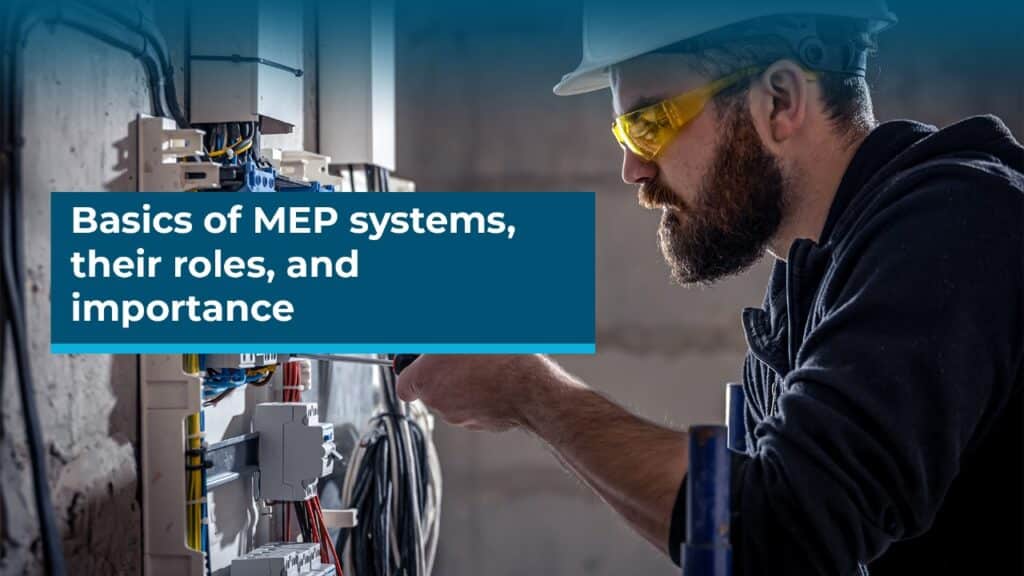The BEST MEP Maintenance and Troubleshooting Guide
At Design Core Interiors, we understand the importance of well-maintained mechanical, electrical, and plumbing (MEP) systems to ensure optimal building performance and safety. These systems are the lifelines of any facility, providing essential services like heating, cooling, lighting, ventilation, plumbing, and fire protection. Over time, MEP systems can deteriorate due to ageing, lack of maintenance, or environmental factors, leading to inefficiencies, safety concerns, and increased operational costs. A comprehensive MEP maintenance and troubleshooting plan is crucial to address these challenges effectively.
Objectives of MEP Maintenance and Troubleshooting
The primary objectives of a thorough MEP maintenance and troubleshooting plan include:
- Ensuring System Reliability: Minimize unexpected breakdowns and downtime.
- Optimising Performance: Enhance the efficiency and functionality of MEP systems.
- Maintaining Safety Standards: Identify and address potential safety hazards.
Cost Management: Reduce long-term operational and maintenance costs by preventing major repairs.
Comprehensive Scope of MEP Maintenance
Our MEP maintenance approach encompasses all critical components of your building’s infrastructure:
1. Heating, Ventilation, and Air Conditioning (HVAC) Systems
- Inspect and maintain boilers, chillers, air handling units, ductwork, and controls.
- Clean and replace air filters to ensure optimal air quality and efficiency.
- Conduct performance checks and calibrations to meet ASHRAE standards.
2. Electrical Systems
- Inspect switchgear, transformers, panel boards, and wiring for wear and compliance with NEC and IEC standards.
- Test emergency backup systems and lighting to ensure uninterrupted functionality.
- Identify energy-saving opportunities through advanced diagnostics.
3. Plumbing Systems
- Check pipes, valves, pumps, and fixtures for leaks, corrosion, and obstructions.
- Ensure compliance with IPC and UPC standards for plumbing efficiency.
- Test water pressure and drainage systems for proper operation.
4. Fire Protection and Detection Systems
- Inspect fire alarms, sprinklers, and hydrants for functionality and adherence to NFPA standards.
- Regular testing of smoke detectors and fire hoses must be conducted.
- Ensure all systems are ready for emergency scenarios.
5. Building Management Systems (BMS)
- Analyse controls and software for optimal monitoring and operation.
- Identify areas to improve energy efficiency using CIBSE Guide H standards.
6. Extra-Low Voltage (ELV) Systems
- Maintain security systems, CCTV, public address systems, and data networks.
- Ensure compliance with BS EN 50132 for advanced system performance.
Proven Methodology for MEP Troubleshooting
Step 1: Information Gathering
Collect as-built drawings, maintenance records, and equipment manuals to assess the system’s operational history and identify problem areas.
Step 2: Visual Inspection
Perform a physical review of all MEP components to detect visible defects, damage, or deterioration. Compare findings to industry benchmarks for compliance.
Step 3: Testing and Diagnostics
Use advanced non-destructive techniques such as infrared thermography, ultrasonic testing, and vibration analysis to assess performance without causing system disruptions.
Step 4: Analysis and Reporting
Analyze collected data to identify discrepancies and inefficiencies. Prepare a detailed report with actionable insights, prioritized recommendations, and cost estimates for remediation.
Common MEP System Challenges and Solutions
1. Corrosion and Degradation
- Issue: Corrosion in pipes and HVAC components reduces system lifespan.
- Solution: Regular maintenance and anti-corrosion treatments.
2. Electrical Failures
- Issue: Overloaded circuits or degraded wiring leading to power outages.
- Solution: Routine inspections and timely replacement of faulty components.
3. HVAC Inefficiencies
- Issue: Increased energy consumption and poor climate control.
- Solution: Regular cleaning of air ducts, filter replacement, and equipment calibration.
Benefits of Regular MEP Maintenance
- Enhanced Safety: Prevents safety hazards, ensuring compliance with international standards.
- Improved Efficiency: Reduces energy consumption and lowers operational costs.
- Extended Lifespan: Timely repairs and maintenance increase the durability of systems.
- Cost Savings: Minimizes expensive emergency repairs and unexpected downtime.
- Strategic Planning: Supports informed decision-making for future upgrades and investments.
Why Choose Design Core Interiors for MEP Maintenance
At Design Core Interiors, we bring unmatched expertise and a customer-focused approach to MEP maintenance and troubleshooting. Whether you’re managing a commercial or industrial facility, our tailored solutions ensure your systems operate safely and efficiently. With cutting-edge tools and adherence to global standards, we deliver quality results that enhance building performance.
For guidance on selecting the right design partner for your project, check out our blog: How to Choose the Right Interior Design Company in Kuwait.










